汽车雷达你了解多少?
车辆智能驾驶时代的道路,车用雷达来。
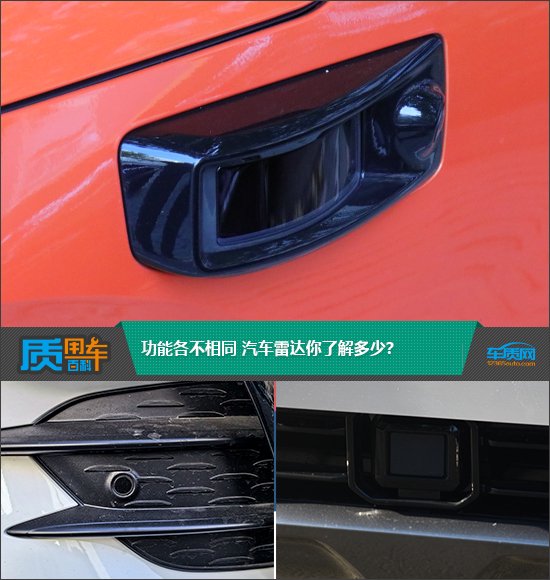
随着技术发展,如今的汽车智能化程度越来越高,配备的传感器也越来越多,特别是与辅助驾驶相关的汽车雷达。为了适配不同的使用场景和功能需求,汽车雷达也分为很多类型,并且各具优缺点。虽然汽车雷达已经几乎成为了汽车的标准配置,日常使用频率也很高,但是它们具体都是怎么工作的,相互之间又有哪些不同?接下来我们就基于技术原理并结合实际应用场景,带大家全方位了解一下汽车雷达。
一、什么是汽车雷达
1、概念及分类
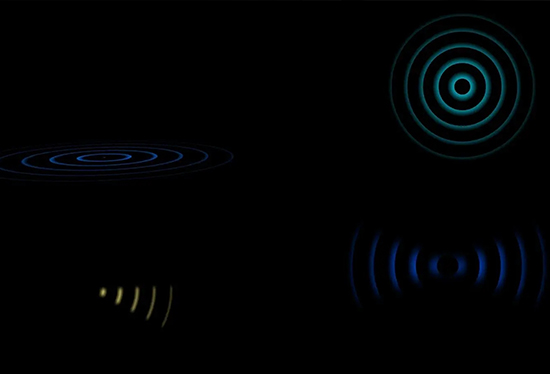
雷达(Radar),源于radio detection and ranging的缩写,意为“无线电探测和测距”,即采用无线电的方法发现目标并测定其空间位置。简单来说,雷达的工作原理就是发射电磁波对目标进行照射并接收回波,基于这个过程获取相应的目标信息。汽车雷达,顾名思义,就是符合车规级要求,应用于汽车或其他地面机动车辆的雷达系统。基于不同的技术路线,汽车雷达主要分为超声波、毫米波雷达、红外雷达和激光雷达,每一个类型都有各自擅长的应用场景。
2、发展历史
1917年,法国物理学家莱昂·瓦拉赫首次提出使用超声波进行测距的概念,而汽车雷达早期的商业化探索是由博世和大陆集团主导,2000年左右正式推出第一代汽车雷达传感器。在最初的实际应用阶段,毫米波雷达未能成为主流,其背后的原因有很多,最主要的还是技术限制。相比之下,超声波雷达的制造成本更低,因此超声波雷达在很长一段时间都是汽车雷达的代名词,主要被用于测距,也就是常见的驻车雷达。早期的驻车雷达一般都放置在车尾,能够警示位于后方视野盲区内的潜在危险。随着技术成熟以及硬件成本下降,驻车雷达数量开始逐渐增加,大量分布于车身前后以及两侧,监测范围更广。除了传统的超声波雷达,精度更高、测距更远的毫米波雷达近年来发展势头相当迅猛,由此还拓展出了更多的功能。
20世纪70年代,人们开始尝试基于毫米波技术进行汽车雷达的研发,但是由于当时的技术限制,因此这个过程并不顺利。直到90年代,得益于微电子技术的发展使雷达小型化成为可能,这才为汽车雷达技术奠定了硬件基础。三菱和奔驰算是最早的两个“先行者”,分别在1995年和1999年尝试性地推出搭载雷达的量产车辆。值得一提的是,奔驰的这套系统名为“Distronic”,其本质就是自适应巡航控制系统,搭载远程毫米波雷达,并非是短距离的超声波测距雷达。
事实上,智能汽车的发展直接推动了车载毫米波雷达进入到大众的主流视野。2015年,特斯拉Model S(配置|询价)量产车正式交付,Autopilot系统传感器的应用再次引爆汽车市场智能驾驶乃至无人驾驶的产业布局。全车采用1+12+1传感器,凭借着出色的驾驶辅助能力,有效强化了毫米波雷达在汽车领域的作用。
虽然汽车雷达已经能够实现丰富的辅助功能,但是随着人们对于高阶自动驾驶的不懈追求,传统的超声波雷达和毫米波雷达也开始显得捉襟见肘。相比之下,激光雷达可以准确感知周边环境的三维信息,探测精度更是达到厘米级别。然而,激光雷达的缺点也很明显,那就是贵!早期的机械式激光雷达动辄几十万甚至上百万,不仅价格昂贵,而且感应器尺寸也比较大,无法应用于汽车领域。
有趣的是,依靠音响起家的Velodyne品牌最早洞察行业发展,转型成为专业的激光雷达制造商,并成功推出了知名的64线激光雷达产品。2010年,开始布局无人驾驶汽车的谷歌选用的就是Velodyne激光雷达,也算是成功为其打了一波广告。后来,随着无人驾驶汽车配备激光雷达的市场前景被行业看好,越来越多的科技巨头纷纷投身车载激光雷达的研发工作。如今,法雷奥、禾赛科技、华为、大疆览沃、图达通等都已成为车载激光雷达的头部企业。基于此,车载激光雷达的硬件成本也开始大幅降低。
二、不同类型雷达的工作原理及优缺点
超声波雷达
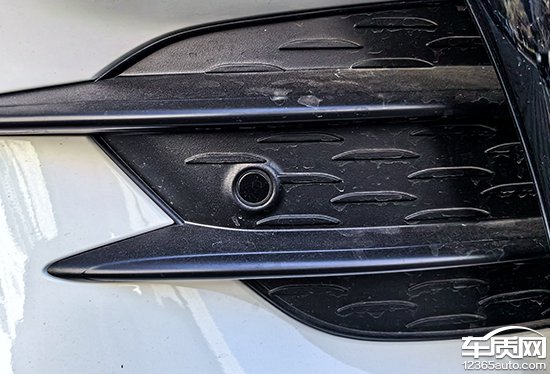
超声波雷达是一种利用超声波探测目标的传感器,通过超声波发射装置向外发出超声波,再利用接收器接收反射回来的超声波时间差来测算距离。在车载传感器中,超声波雷达是目前最常见的品种之一,在短距离测量中,超声波测距传感器具有非常大的优势。
目前,常用的探头工作频率有40kHz, 48kHz和58kHz三种。一般来说,频率越高,其灵敏度也就越高,但是水平与垂直方向的探测角度却会随着频率越高而越小,因此驻车雷达一般都采用40kHz的探头。超声波雷达价格便宜,防水、防尘效果好,即使有少量泥沙遮挡也不会影响测距,而且短距离探测精度较高。不过缺点也显而易见,那就是探测距离相对较近,适用范围较窄。
毫米波雷达
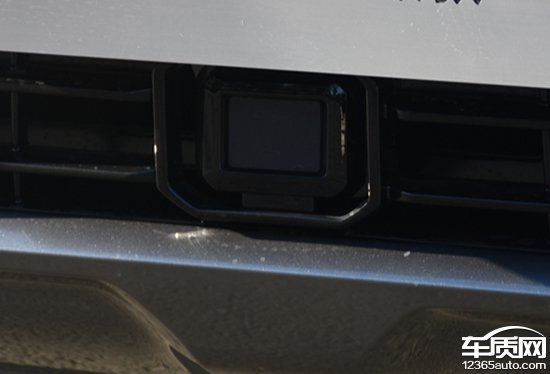
毫米波雷达是一种利用毫米波频段电磁波探测目标的传感器,相比之下,毫米波具有较高的频率和较短的波长。毫米波雷达信号传输速度比超声波更快、更精确。由于传统的24GHz窄带毫米波雷达存在一定的局限性,因此目前主流的毫米波雷达传感技术正朝着76-81GHz频段、调频连续波(FMCW)和波束成形天线的方向快速发展。
3D毫米波雷达无法识别静止物体,同时也缺乏高度信息,技术相对落后。4D毫米波雷达的全称是“4D毫米波成像雷达”,可以理解为是3D毫米波雷达的升级版。其增加了俯仰角度测量的能力,能够对目标进行高维度数据解析,可以实现更丰富的信息感知。相较于超声波雷达,毫米波雷达的天线更小,功率也更低。此外,毫米波雷达还具备广视角、高分辨、探测距离远、能探测静物等优势。不过,由于毫米波雷达无法准确判断障碍物立体轮廓以及物体颜色,因此一般需要与摄像头搭配使用。
激光雷达
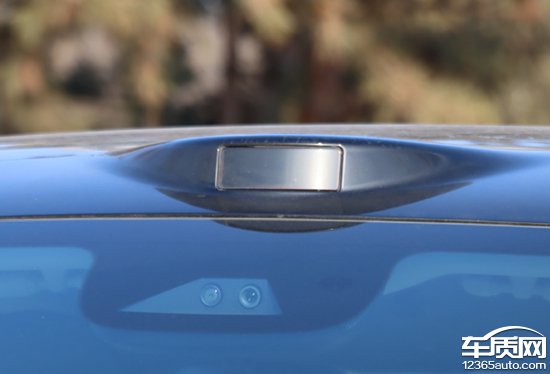
激光并不像红外线、紫外线等是某一波段的光的总称,而是有着精确单一颜色和单一波长的光。相较由多种颜色、波长混合的自然光,激光有着亮度高、能量大、方向性好的特点。由于生产波长为1550nm的激光雷达需要使用昂贵的砷化镓材料,因此受制于成本因素,用硅材料制造接近可见光波长的905nm激光雷达是目前行业的主流。
在所有雷达中,激光雷达的传播速度最快,并且其还具备探测精度高、稳定性强、识别障碍物立体轮廓准确等特点。只可惜,激光雷达受天气环境影响较大,并且对于颜色和图案的识别能力也很弱。由于激光雷达获取的原始数据量极大,需要进行复杂的数据处理才能生成实际使用的信息,这就导致激光雷达的体型比较大,而且功耗也很高。此外,激光雷达的制造工艺和组装难度相较超声波和毫米波雷达都要更高,这些因素直接影响了其大规模生产和部署能力。
红外雷达
红外雷达是指工作在红外波段的光雷达,红外雷达传感器主要是辅助提高驾驶者对前方障碍物的感知能力,即车载夜视系统。根据工作原理的不同,红外雷达传感器分为主动式和被动式。其中,主动式红外雷达配有红外光发射源和接收装置,可以在夜间低照明环境下发现较远的路面障碍物;被动式红外雷达则仅依靠一套红外接收装置,通过对外界物体反射的红外信号源进行解析。虽然结构相对简单,但是在识别精度和距离方面却明显不及主动式红外雷达。
红外雷达传感器在昏暗环境中具备较大优势,不过依赖红外信号的特性也使得它在白天光线充足时,会受到红外光源的影响,并不具备全天候工作能力。此外,红外雷达传感器的有效探测距离也相对较近,这就导致其使用场景相对单一。虽然能够提高驾驶者对前方障碍物的感知能力,但是随着辅助驾驶技术的发展,红外雷达已经逐步被淘汰,越来越少见了。
In the era of intelligent vehicle driving, vehicles use radar to drive on the road.
With the development of technology, the level of intelligence in cars is increasing, and more and more sensors are equipped, especially car radars related to assisted driving. In order to adapt to different usage scenarios and functional requirements, car radars are also divided into many types, each with its own advantages and disadvantages. Although car radar has almost become a standard configuration in cars and is used frequently in daily life, how do they work specifically and what are the differences between them? Next, based on technical principles and practical application scenarios, we will take you through a comprehensive understanding of automotive radar.
1、 What is car radar
1. Concept and classification
Quality car: Different functions. How much do you know about car radars?
Radar, derived from the abbreviation of radio detection and ranging, means radio detection and ranging, which uses radio methods to detect targets and determine their spatial positions. Simply put, the working principle of radar is to emit electromagnetic waves to illuminate the target and receive echoes, and based on this process, obtain corresponding target information. Car radar, as the name suggests, is a radar system that meets the requirements of vehicle regulations and is applied to cars or other ground motor vehicles. Based on different technological routes, automotive radar is mainly divided into ultrasonic, millimeter wave radar, infrared radar, and LiDAR, each with its own specialized application scenarios.
2. Development history
In 1917, French physicist Leon Varach first proposed the concept of using ultrasound for distance measurement, and the early commercial exploration of automotive radar was led by Bosch and Continental. Around 2000, the first generation of automotive radar sensors was officially launched. In the initial practical application stage, millimeter wave radar did not become mainstream due to many reasons, the most important of which was technical limitations. In contrast, the manufacturing cost of ultrasonic radar is lower, so ultrasonic radar has been synonymous with automotive radar for a long time, mainly used for ranging, which is a common parking radar. Early parking radars were generally placed at the rear of the car to warn of potential dangers located in the blind spot of the rear view. With the maturity of technology and the decrease in hardware costs, the number of parking radars is gradually increasing, and they are widely distributed in the front, back, and sides of the vehicle, with a wider monitoring range. In addition to traditional ultrasonic radar, millimeter wave radar with higher accuracy and longer range has developed rapidly in recent years, which has also expanded its functions.
In the 1970s, people began to try to develop automotive radar based on millimeter wave technology, but due to technological limitations at that time, the process was not smooth. Until the 1990s, thanks to the development of microelectronics technology, miniaturization of radar became possible, which laid the hardware foundation for automotive radar technology. Mitsubishi and Mercedes Benz are among the earliest two pioneers, attempting to launch mass-produced vehicles equipped with radar in 1995 and 1999, respectively. It is worth mentioning that Mercedes Benzs system is called Distronic, which is essentially an adaptive cruise control system equipped with a long-range millimeter wave radar, not a short-range ultrasonic ranging radar.
In fact, the development of smart cars has directly pushed in car mounted millimeter wave radar into the mainstream view of the public. In 2015, Tesla Model S (configuration | inquiry) mass-produced vehicles were officially delivered, and the application of Autopilot system sensors once again ignited the industrial layout of intelligent driving and even autonomous driving in the automotive market. The entire vehicle adopts 1+12+1 sensors, which, with excellent driving assistance capabilities, effectively enhances the role of millimeter wave radar in the automotive field.
Although automotive radar has been able to achieve rich auxiliary functions, with peoples relentless pursuit of advanced autonomous driving, traditional ultrasonic radar and millimeter wave radar have also become inadequate. In contrast, LiDAR can accurately perceive three-dimensional information of the surrounding environment, and its detection accuracy can reach the centimeter level. However, the disadvantage of LiDAR is also very obvious, which is its high cost! Early mechanical LiDARs were often tens of thousands or even millions, not only expensive, but also had large sensor sizes, making them unsuitable for use in the automotive industry.
It is interesting that the Velodyne brand, which started with sound technology, was the first to gain insight into industry development and transformed into a professional LiDAR manufacturer, successfully launching the well-known 64 line LiDAR product. In 2010, Google, which began laying out autonomous vehicles, chose Velodyne LiDAR, which was considered a successful advertisement for it. Later, as the market prospects for autonomous vehicles equipped with LiDAR were optimistic in the industry, more and more technology giants began to invest in the research and development of in vehicle LiDAR. Nowadays, companies such as Fareo, Hesai Technology, Huawei, DJI Lanwo, and Tudatong have all become leading companies in vehicle mounted LiDAR. Based on this, the hardware cost of in vehicle LiDAR has also begun to significantly reduce.
2、 The working principle and advantages and disadvantages of different types of radars
Ultrasonic radar
Quality car: Different functions. How much do you know about car radars?
Ultrasonic radar is a sensor that uses ultrasonic waves to detect targets. It emits ultrasonic waves outward through an ultrasonic emission device, and then calculates the distance by using the time difference of the reflected ultrasonic waves received by the receiver. Among in car sensors, ultrasonic radar is currently one of the most common varieties, and in short distance measurement, ultrasonic ranging sensors have great advantages.
At present, there are three commonly used probe operating frequencies: 40kHz, 48kHz, and 58kHz. Generally speaking, the higher the frequency, the higher its sensitivity, but the detection angles in the horizontal and vertical directions will decrease with the higher frequency. Therefore, parking radars generally use a 40kHz probe. Ultrasonic radar is inexpensive, with good waterproof and dustproof effects. Even if there is a small amount of mud and sand blocking, it will not affect the distance measurement, and the short distance detection accuracy is high. However, the disadvantage is also obvious, which is that the detection distance is relatively close and the application range is narrow.
Millimeter wave radar
Quality car: Different functions. How much do you know about car radars?
Millimeter wave radar is a sensor that uses electromagnetic waves in the millimeter wave frequency band to detect targets. In contrast, millimeter waves have higher frequencies and shorter wavelengths. Millimeter wave radar signal transmission speed is faster and more accurate than ultrasound. Due to the limitations of traditional 24GHz narrowband millimeter wave radar, the mainstream millimeter wave radar sensing technology is rapidly developing towards the 76-81GHz frequency band, frequency modulated continuous wave (FMCW), and beamforming antennas.
3D millimeter wave radar is unable to recognize stationary objects and lacks height information, resulting in relatively outdated technology. The full name of 4D millimeter wave radar is 4D millimeter wave imaging radar, which can be understood as an upgraded version of 3D millimeter wave radar. It increases the ability to measure pitch angle, enabling high-dimensional data analysis of targets and achieving richer information perception. Compared to ultrasonic radar, millimeter wave radar has smaller antennas and lower power. In addition, millimeter wave radar also has advantages such as wide viewing angle, high resolution, long detection distance, and the ability to detect still life. However, due to the inability of millimeter wave radar to accurately determine the three-dimensional contour and color of obstacles, it is generally necessary to use it in conjunction with a camera.
LiDAR
Quality car: Different functions. How much do you know about car radars?
Laser is not like infrared, ultraviolet, etc., which is a general term for a certain band of light, but rather has a precise single color and single wavelength of light. Compared to natural light mixed with multiple colors and wavelengths, lasers have the characteristics of high brightness, high energy, and good directionality. Due to the need for expensive gallium arsenide materials to produce LiDAR with a wavelength of 1550nm, manufacturing 905nm LiDAR with silicon materials close to visible light wavelength is currently the mainstream in the industry due to cost constraints.
advertisement
Among all radars, LiDAR has the fastest propagation speed, and it also has the characteristics of high detection accuracy, strong stability, and accurate recognition of obstacle three-dimensional contours. Unfortunately, LiDAR is greatly affected by weather conditions and has weak recognition capabilities for colors and patterns. Due to the large amount of raw data obtained by LiDAR, complex data processing is required to generate actual usage information, which leads to a relatively large size and high power consumption of LiDAR. In addition, the manufacturing process and assembly difficulty of LiDAR are higher than those of ultrasonic and millimeter wave radars, and these factors directly affect its large-scale production and deployment capabilities.
Infrared radar
Infrared radar refers to a light radar that operates in the infrared band. The infrared radar sensor is mainly used to assist in improving the drivers perception ability of obstacles ahead, that is, the vehicle mounted night vision system. According to different working principles, infrared radar sensors are divided into active and passive types. Among them, the active infrared radar is equipped with an infrared light emitting source and receiving device, which can detect distant road obstacles in low lighting environments at night; Passive infrared radar relies solely on a set of infrared receiving devices to analyze the infrared signal source reflected by external objects. Although the structure is relatively simple, it is significantly inferior to active infrared radar in terms of recognition accuracy and distance.
Infrared radar sensors have significant advantages in low light environments, but their dependence on infrared signals also makes them susceptible to the influence of infrared light sources during the day, making them less capable of working around the clock. In addition, the effective detection range of infrared radar sensors is relatively close, which leads to a relatively single usage scenario. Although it can improve the drivers perception of obstacles ahead, with the development of assisted driving technology, infrared radar has gradually been phased out and is becoming increasingly rare.

